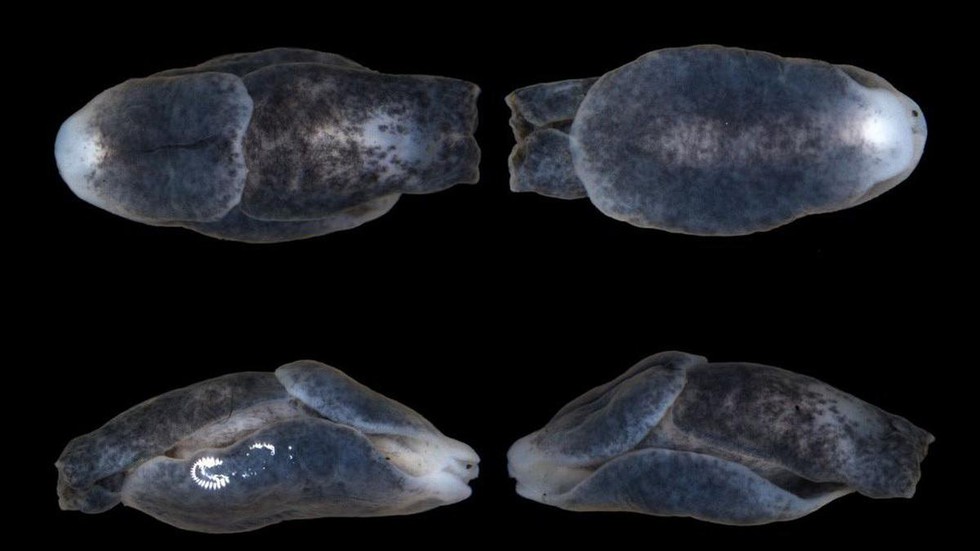Researchers from the Zoological Survey of India (ZSI) have made a significant discovery along the coasts of Odisha and West Bengal.
Discovery and Naming
- Discovery: A new species of head-shield sea slug was discovered by zoologists and researchers from ZSI.
- Location: Found along a three-kilometer stretch of the low inter-tidal zones of Digha (West Bengal) and Udaypur (Odisha) coast.
- Distinctive Feature: Identified by its ruby red spot.
- Naming: Named as Melanochlamys Droupadi after Droupadi Murmu, the President of India.
Habitat and Characteristics
- Habitat: Inhabits wet and soft sandy beaches.
- Appearance: Brownish black in color with a ruby red spot at the hind end.
- Size: Small invertebrate with a maximum length up to seven mm.
- Reproductive Features: Hermaphrodite with a shell inside the body.
Morphological Comparison
- Shares habitat with Melanochlamys bengalensis but differs morphologically.
- Smaller in size with mottled brown to black coloration.
- Longer posterior shield (about 61 per cent of body length).
Research and Confirmation
- Confirmed through thorough examination of morphological, anatomical, and molecular characteristics.
- Discovered during routine study of marine species at Hospital Ghat near Old Digha.
Behavior and Diet
- Rapid hunters feeding on mobile prey such as other shelled and unshelled sea slugs, roundworms, marine worms, and small fishes.
- Reproduction observed between November and January.
Significance and Publication
- Second species of head-shield sea slug discovered in India.
- Published in a leading molluscan journal of England – Mollusca Research.
Multiple Choice Questions (MCQs):
- What is the name of the newly discovered species of head-shield sea slug?
A) Melanochlamys bengalensis
B) Melanochlamys Droupadi
C) Melanochlamys thailandensis
D) Melanochlamys murmu
Answer: B) Melanochlamys Droupadi - Where was the Melanochlamys Droupadi discovered?
A) Kerala and Tamil Nadu coast
B) Odisha and Andhra Pradesh coast
C) Odisha and West Bengal coast
D) Gujarat and Maharashtra coast
Answer: C) Odisha and West Bengal coast - What characteristic feature distinguishes Melanochlamys Droupadi?
A) Green spot on its back
B) Yellow spot on its tail
C) Ruby red spot at the hind end
D) Blue spot on its head
Answer: C) Ruby red spot at the hind end - How do Melanochlamys Droupadi and Melanochlamys bengalensis differ morphologically?
A) Melanochlamys Droupadi is larger in size.
B) Melanochlamys bengalensis has a longer posterior shield.
C) Melanochlamys Droupadi has a longer posterior shield.
D) Both species have identical morphology.
Answer: C) Melanochlamys Droupadi has a longer posterior shield.
